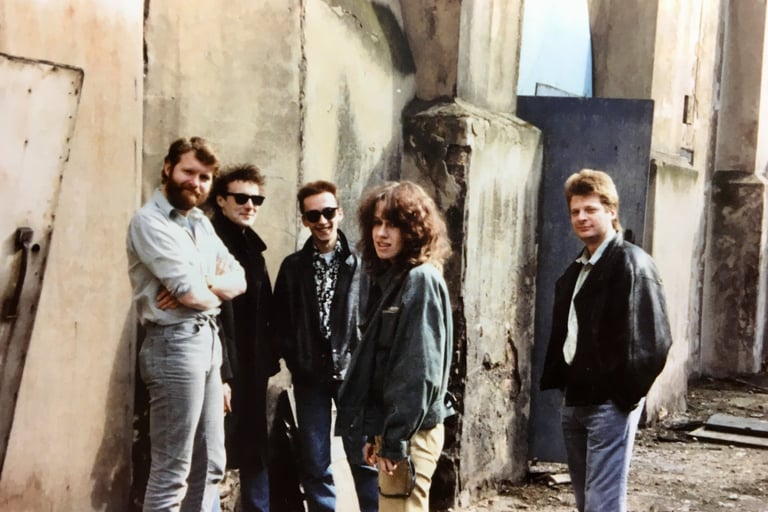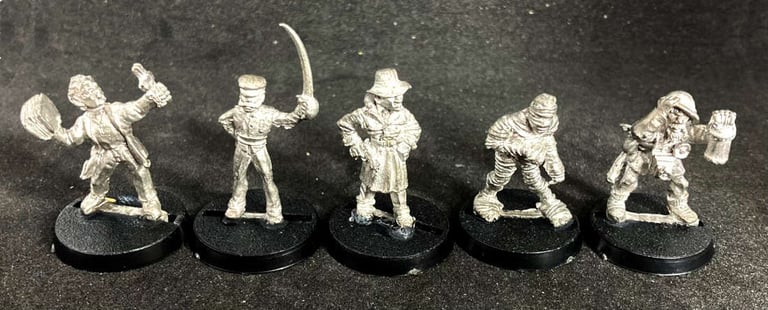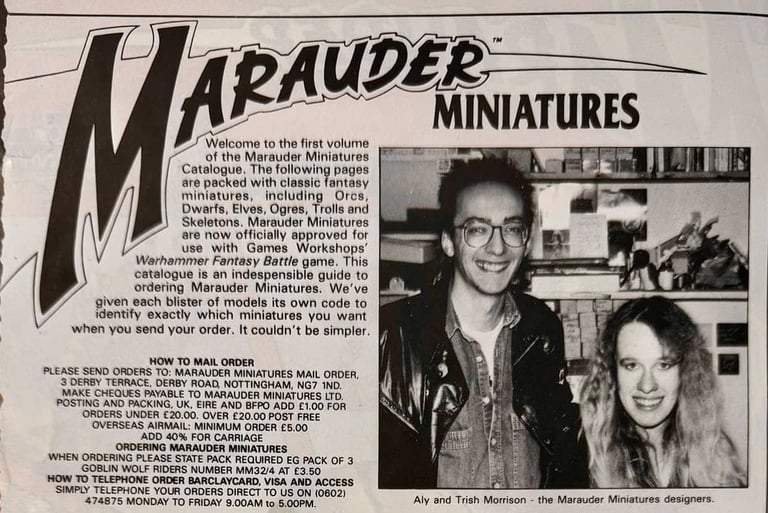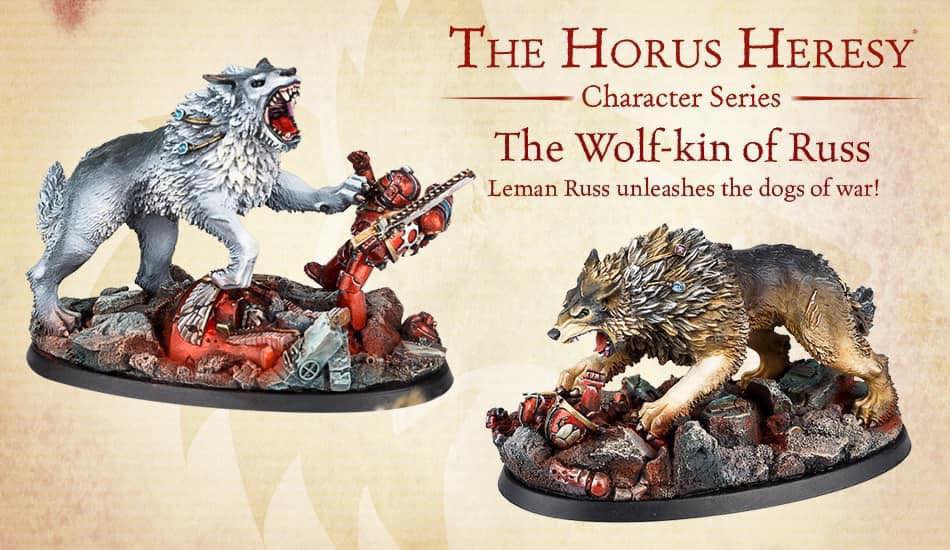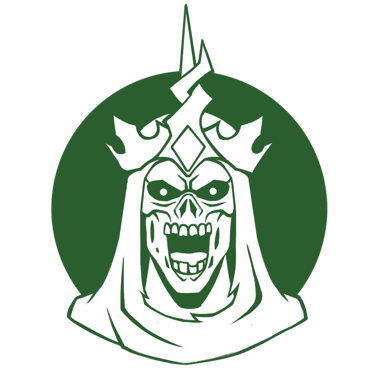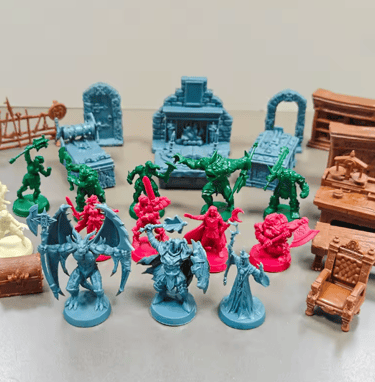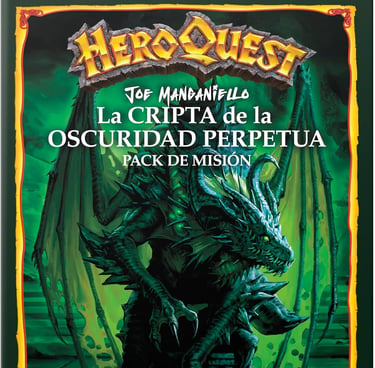Trish Carden - English version
ENTREVISTAS
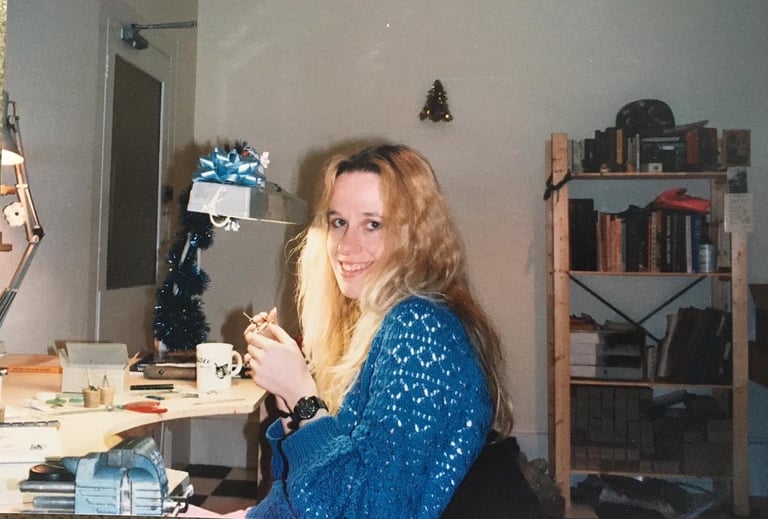

Trish was responsible of some of the most iconic figures in the Warhammer Fantasy universe, and I have particularly fond memories of the Marauder miniatures. The wargaming community deeply appreciates her invaluable contributions to the Games Workshop miniature range.
Complete interview with Trish Carden
To begin with, could you tell us a bit about your professional background? How did you first get involved with Games Workshop?
Trish Carden: I have a degree in Jewellery and Silversmithing from Edinburgh college of Art. When I graduated I had my own small business before I met Aly (Morrison) and became interested in the miniatures he was making for various companies. He was offered a job with G.W. and I decided to try sculpting a miniature. He showed it to Bryan (Ansell) who offered me a job too! For a while I kept on with my jewellery business and also did some freelance sculpting for GW, but when we moved to Nottingham I took a full time position as a miniatures designer.
Prior to joining Games Workshop, were you already a gamer? If so, which games did you play?
TC: Prior to joining GW I had never been a gamer, I didn’t even know there was such a thing! I’d heard of D&D but never played.
When did you first hear about Bryan Ansell’s partnership with Milton Bradley to develop HeroQuest? What was your initial reaction to the project?
TC: We were told in the studio about HeroQuest and were excited to be involved with the project. Some designers were more involved than others, I was more concentrating more on other ranges so I did less than a lot of the others.
Can you describe the creative process behind the HeroQuest miniatures? Did team members focus on specific models, and do you recall which ones you sculpted?
TC: I don’t recall a lot about the beginning of the creative process as I wasn’t heavily involved with it. I came in a little later once the designs had been done and the sculpting was due to start. We all sat around a big table and picked a figure to work on. After a while we would put it down and move on to something else. It meant that it was truly a team effort with lots of individual sculpts being worked on by more than one person. I remember mostly working on the Bloodthirster and the Mummy
Were you involved in any of the expansions for HeroQuest or any other dungeon crawler game from that era?
TC: I made a few of the miniatures for Curse of the Mummy’s Tomb…I recall doing professor Nayland Cushing, Idaho Smith and possibly a couple of others.
Was there anything you designed that didn’t make it into the final game, but you feel should have been included?
TC: To be honest I can’t remember if any of the sculpts I did were unreleased.
Did you also work on any of the miniatures for Space Crusade, or Advanced Heroquest?
TC: I wasn’t involved in Space Crusade or Advanced Heroquest at all.
As a founder of Marauder Miniatures, did you have creative freedom in your designs, or did Citadel maintain oversight?
TC: We had a lot of creative freedom at Marauder Miniatures. Our main aim was to keep fantasy ranges going as Citadel was very much focused on 40k by then and fantasy was being left behind. We wanted to make miniatures that could be used alongside existing Citadel miniatures and also fill in gaps in the ranges.
What ultimately led to the end of Marauder Miniatures?
TC: Marauder Miniatures was very successful and so after a few years it was absorbed back into the main company. I think we managed to keep the interest in fantasy going at a time when everyone at the Citadel Design studio was really l where GW wanted us back in the main design studio so sadly Marauder Miniatures came to an end.
Could you shed some light on the relationship between Citadel (Games Workshop) and Forge World? Was it a competitive environment among sculptors, or more collaborative?
TC: Forge World was like a sister studio to Citadel but concentrated on resin miniatures and things that Citadel would never put in the main ranges. It was a chance to do larger and more unusual sculpts that would often require more expertise to put together and paint.
Do you still play games today? And as a hobbyist, which do you enjoy more—sculpting or painting?
TC: I’m not really a gamer, I am more into the actual making of fantasy creatures, be it sculpting or art. I’ve occasionally played Talisman but never been interested in having an army and gaming.
According to your social media, you're still actively creating miniatures. Do you run your own design studio, and are there any current projects you'd like to share?
TC: I have my own little range of miniatures called HarrowHyrst that Footsore Miniatures produce and sell for me. I consider myself semi-retired but I will never stop creating and HarrowHyrst gives me the chance to make whatever I want, whenever I want. I also enjoy illustrating the world and making 3D felt terrain for it. It’s the time in my life for me to make my own creations while also having plenty time to spend with family, travel and just chill! If you keep an eye on my social media there will always be posts there showing what I’m working on as well as chatting about past ranges for GW.
The wargaming industry has largely transitioned to digital design, and 3D printing is becoming increasingly accessible to hobbyists.
What are your thoughts on the future of traditional sculpting in this evolving landscape?
TC: I think traditional sculpting will always have its place. There are many wonderful digital sculptors around but to me something that is made entirely by hand with putty and sculpting tools will always be extra special!
Closing
Thank you once again for taking the time to answer our questions—and for all the amazing work you've done to make our childhoods (and our miniature collections) so much more memorable and fun!
If you want to know more about Trish current work, visit https://footsoreminiatures.co.uk/collections/harrowhyrst
